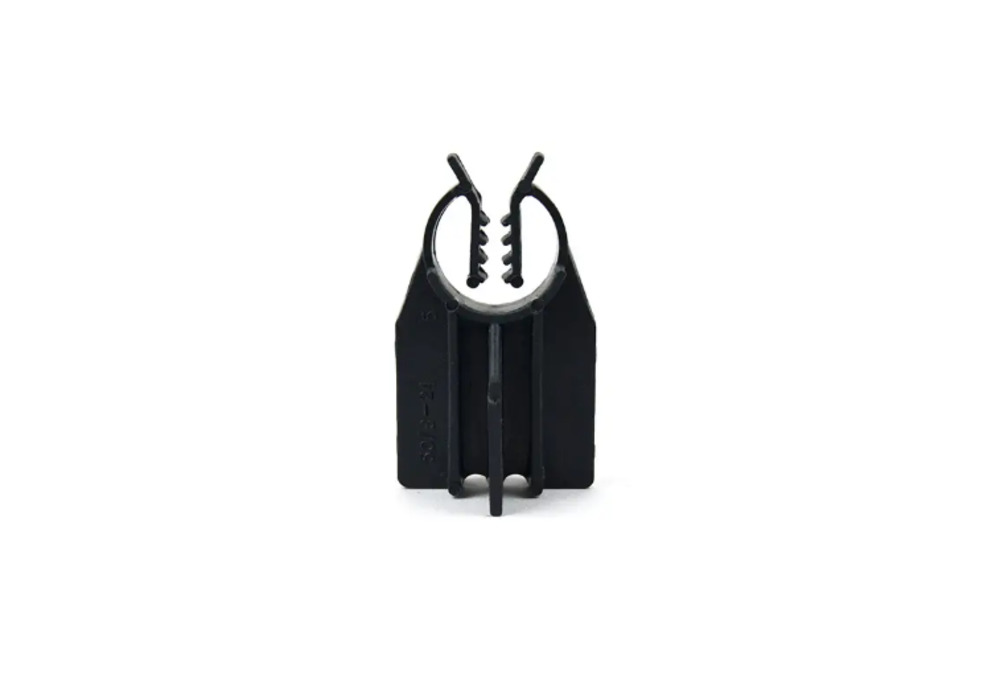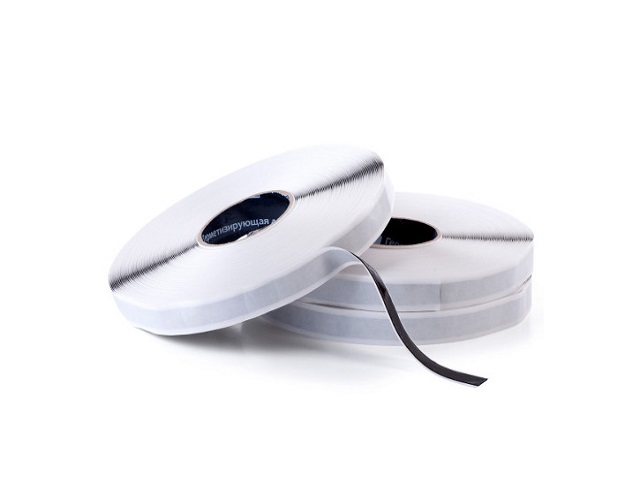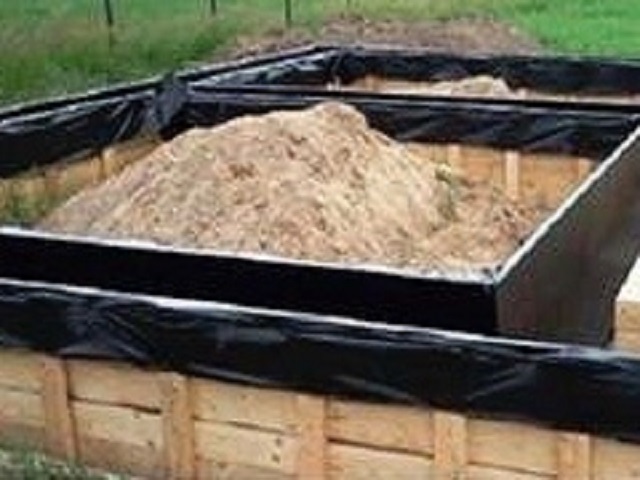Needle-punched geotextile GEOKEN with a density of RC 200 g/sq.m, rolls 2mX 50m (100 sq.m) for drainage (Turkey)
Product code: 0131
For use in the construction of drainage systems and in the agricultural industry and construction
2862 uah
Needle-punched geotextile has a large elongation coefficient, easily takes the necessary shape and has excellent filtering abilities in the longitudinal and transverse directions.
The main functions of geotextile:
- lack of reaction with aggressive environment – not prone to mold formation, not afraid of high humidity, which allows you to protect the system from silting for many years;
- resistant to rodents, moles, insects and other pests that can damage the integrity of the material;
- it is environmentally safe for humans – artificial fibers buried in the ground do not emit toxic substances, therefore they do not harm the flower beds or vegetables in the beds;
- resistance to temperature changes – fiber does not lose its properties under the influence of temperature changes from 110 ° C to -60 ° C, therefore it is in demand in any climate;
- ease of handling due to the fabric base of the material, high strength and elasticity allow it to be quickly laid in the necessary pieces.
Scope of application:
- Construction – in a flat roof system; for waterproofing as a reinforcing layer; when paving the road; for drainage; foundation construction.
- In landscape design – the creation of Alpine slides; arrangement of reservoirs; under the sidewalks; construction of sports grounds and football fields.
- In the clothing and footwear industry – as a cushioning and strengthening material.
- In the furniture industry – as a separating and protective material.
- In agriculture – protection of plants from weeds, frost, sun, wind
- In drainage systems
Surface density - 120±6 g/m2
Roll width - 200 cm
Breaking force along the length - not less than 2.8 kN/m
Width breaking force - not less than 2.8 kN/m
Elongation at break along the length - no more than 60%
Elongation at break across width - no more than 90%
Roll size: 2m x 50 linear meters. m (100 sq.m.)
Material: polypropylene;
Density: 200 g/sq.m;
White color.
Laying geotextiles is a process that plays a key role in construction, especially when working with road surfaces, soil structures and landscaping.
Here are a few steps to help you install geotextiles correctly:
Surface preparation: Make sure the surface on which the geotextile will be laid is free of debris, sharp objects and stones. If necessary, carry out preparatory work, including leveling and compacting the soil.
Selection and installation of geotextiles: Select the appropriate type of geotextiles to suit your project requirements. When laying geotextiles, ensure that they are distributed evenly and without folds over the entire surface. Make sure that the geotextile is not damaged during installation.
Layering: If you need to use several layers of geotextiles, lay them in such a way that each layer overlaps the previous one by a sufficient length (usually at least 10-20 cm). This will help prevent soil penetration and maintain the integrity of the structure.
Fixation of geotextiles: It is important to ensure reliable fixation of geotextiles so that they do not move during construction work or as a result of environmental influences. To do this, you can use fasteners, pins, weights or other special devices.
Checking the installation quality: After installation is complete, check the quality of the work done. Make sure that the geotextile is laid flat and without folds, that it is securely fastened, and that there is no unexpected damage.
Protection of geotextiles: After laying geotextiles, it should be protected from external influences such as ultraviolet radiation, mechanical damage and chemicals. To do this, you can use additional protective layers or special coatings.
Following these steps will help ensure that geotextiles are installed correctly and remain effective throughout their lifespan.
Remember that the correct use of geotextiles is important for the durability and stability of building structures.
How to lay geotextiles correctly?
Geotextiles can be rolled out manually or using special equipment. It depends on the width of the roll. Make sure that the laying occurs in an even layer without folds or twisting. Before laying geotextiles, it is necessary to carefully remove rhizomes, stones and other debris, prepare the soil base, and level the area. When using several rolls, geotextiles are laid with an overlap, overlapping the adjacent fabric by 10-30 cm. This will help avoid mixing of layers and displacement when pouring bulk materials.
Which geotextile allows water to pass through better?
All geotextile fabrics allow water to pass through themselves well, but each type has its own water permeability indicator. The water permeability of geotextiles is determined by the amount of liquid passing through the canvas in a given period of time and is measured in l/sec/m2. The higher the density of geotextiles, the less water permeability it has. Therefore, geotextiles with a low density, from 80 to 200 g/m2, depending on the type of geotextile fabric, allow water to pass through better.
What is the difference between needle-punched geotextiles and heat-fixed ones?
Geotextiles produced by the thermofixed method are heated during production, making the fabric stronger and more resistant to mechanical stress. The ability of the fabric to pass water becomes significantly lower. Therefore, if you need geotextiles with high water permeability, use needle-punched geotextiles; if strength is a priority, use thermofixed geotextiles. The choice of method for producing geotextiles depends on its technical characteristics.
What geotextiles should be used to construct a temporary road?
Temporary roads are subject to heavy loads, as they will be used not only by passenger cars, but also by large-sized technological vehicles. It is worth giving preference to a fabric with increased strength indicators - thermofixed geotextiles with a density of 200-300 g/m².
How to lay geotextiles correctly?
Geotextiles can be rolled out manually or using special equipment. It depends on the width of the roll. Make sure that the laying occurs in an even layer without folds or twisting. Before laying geotextiles, it is necessary to carefully remove rhizomes, stones and other debris, prepare the soil base, and level the area. When using several rolls, geotextiles are laid with an overlap, overlapping the adjacent fabric by 10-30 cm. This will help avoid mixing of layers and displacement when pouring bulk materials.
Which geotextile allows water to pass through better?
All geotextile fabrics allow water to pass through themselves well, but each type has its own water permeability indicator. The water permeability of geotextiles is determined by the amount of liquid passing through the canvas in a given period of time and is measured in l/sec/m2. The higher the density of geotextiles, the less water permeability it has. Therefore, geotextiles with a low density, from 80 to 200 g/m2, depending on the type of geotextile fabric, allow water to pass through better.
What is the difference between needle-punched geotextiles and heat-fixed ones?
Geotextiles produced by the thermofixed method are heated during production, making the fabric stronger and more resistant to mechanical stress. The ability of the fabric to pass water becomes significantly lower. Therefore, if you need geotextiles with high water permeability, use needle-punched geotextiles; if strength is a priority, use thermofixed geotextiles. The choice of method for producing geotextiles depends on its technical characteristics.
What geotextiles should be used to construct a temporary road?
Temporary roads are subject to heavy loads, as they will be used not only by passenger cars, but also by large-sized technological vehicles. It is worth giving preference to a fabric with increased strength indicators - thermofixed geotextiles with a density of 200-300 g/m².
Related materials
Related materials
Reinforcement clamps Flooring 25-30 mm. 250 pcs/ pack. Retainer of the protective layer of the reinforcement
Retainer flooring for a protective horizontal layer of reinforcement on a loose base, soils, gravel, sand.
Rebar retainer universal stand protective layer 50/8 mm, 500 pcs.
The floor retainer is designed to create a protective horizontal layer of 50 mm for 8-16 mm reinforcement on a solid base.
Spiked membrane SNTDRAIN EKL 600, (2X20 roll) for foundation and drainage protection
For underground structures, basement and retaining walls, tunnels, underground parking lots, road construction
Sealant-tape K-2 for gluing a spiked membrane
Vapor barrier sealing tape-sealant SNTDrain for gluing steam, hydro barrier and membranes, 15x1.5 mm, 45 m.p
Polyethylene construction film 100 microns sleeve 300kv.m
Universal construction film
© "Protex-S" LLC2021 | Website created by MD Design




